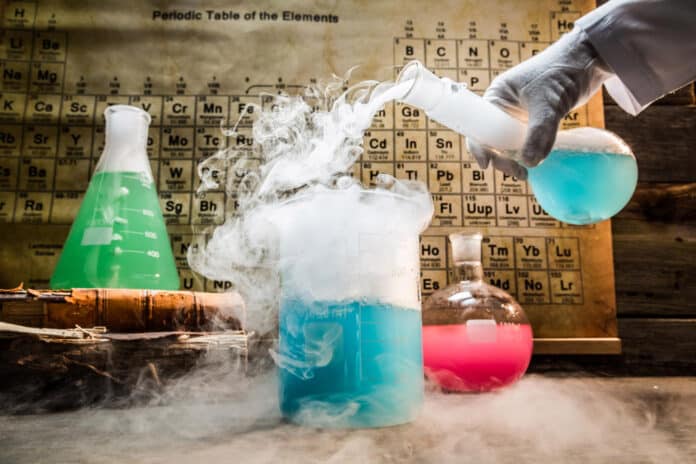Urea and its photoinduced reactions are a cornerstone in current theories on the origin of life. When exposed to ionizing radiation, urea forms malonic acid, which further reacts with urea to yield several nucleobases. Thus, The urea dimer is an intriguing system for understanding the first steps in ultrafast chemistry at the origin of life and an excellent model system for studying proton transfer across hydrogen bonds, an essential source of mutations in both RNA and DNA.
Given the wide significance of urea, its dimer, and photoinduced proton-transfer dynamics, this system is ideal for applying the femtosecond soft X-ray absorption spectroscopy (XAS) of liquids. In a new study, scientists from ETH Zurich and the University of Geneva investigated femtosecond proton transfer in ionized urea dimers in an aqueous solution. They have developed a new method that allows them to observe chemical reactions taking place in liquids at extremely high temporal resolution.
The approach is based on prior research by the same team of scientists under the direction of Hans Jakob Wörner, an ETH Zurich professor of physical chemistry. Similar outcomes for reactions in gas settings were obtained from that work.
To extend their X-ray spectroscopy observations to liquids, the scientists had to create a device to generate a liquid jet with a width of less than one micrometer in a vacuum. This was crucial because if the jet were any wider, some of the X-rays required to measure it would have been absorbed.
Scientists used their method to investigate the first step in this long series of chemical reactions to determine how a concentrated urea solution behaves when exposed to ionizing radiation.
Urea reacts extremely quickly under the conditions that existed when our planet was newly formed. This new insight furthers our understanding of how life on Earth might have begun.
It’s crucial to understand that the urea molecules in a concentrated urea solution form dimers, or pairs of molecules. Ionizing radiation causes a hydrogen atom in each of these dimers to migrate from one urea molecule to the next, as scientists have now been able to demonstrate. As a result, one urea molecule becomes protonated, while the other becomes a urea radical. The latter is extremely chemically reactive; it is so reactive that it is quite likely to combine with other molecules and produce malonic acid as a byproduct.
Scientists showed this transfer of a hydrogen atom happens extremely quickly, taking only around 150 femtoseconds, or 150 quadrillionths of a second.
Hans Jakob Wörner, Professor of Physical Chemistry at ETH Zurich, said, “That’s so fast that this reaction preempts all other reactions that might theoretically also occur. This explains why concentrated urea solutions produce urea radicals rather than hosting other reactions that would produce other molecules.”
Scientists are now looking forward to examining the next steps that lead to the formation of malonic acid. They hope this will help them to understand the origins of life on Earth.
Journal Reference:
- Yin Z, Chang YP, Balčiūnas T, Shakya Y, Djorović A, Gaulier G, Fazio G, Santra R, Inhester L, Wolf JP, Wörner HJ: Femtosecond Proton Transfer in Urea Solutions Probed by X-ray Spectroscopy, Nature, 28 June 2023, DOI: 10.1038/s41586-023-06182-6
